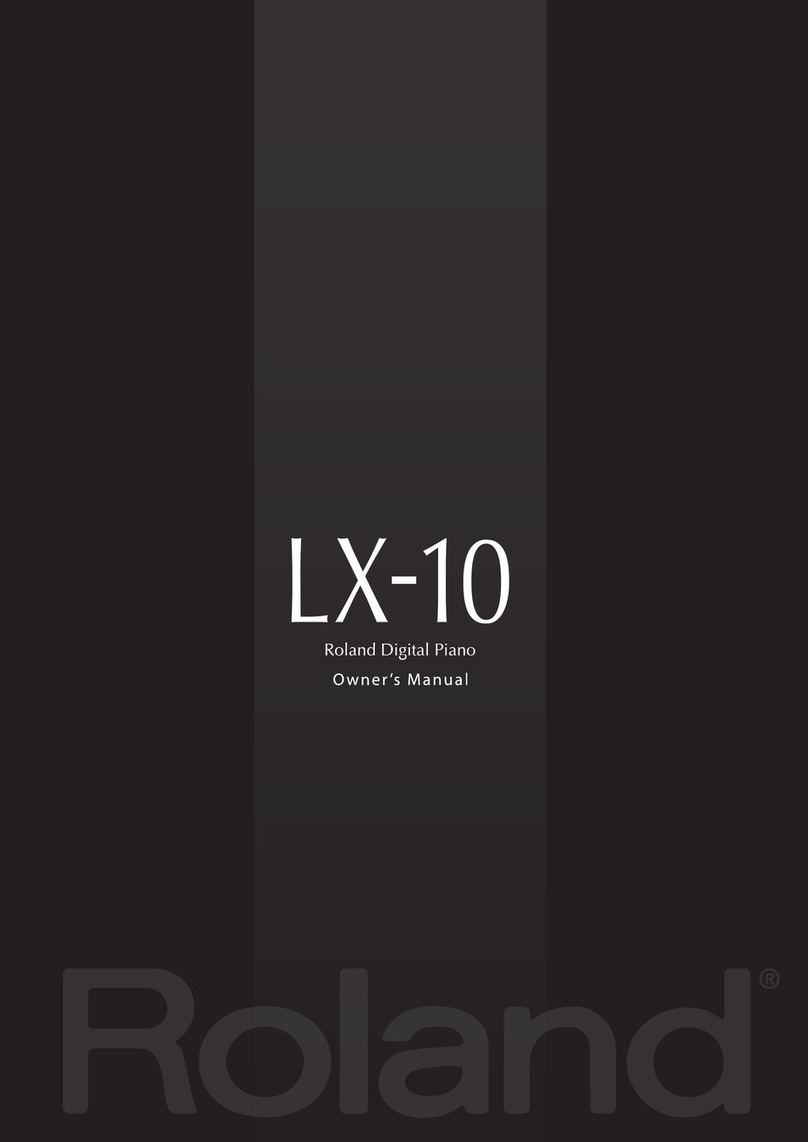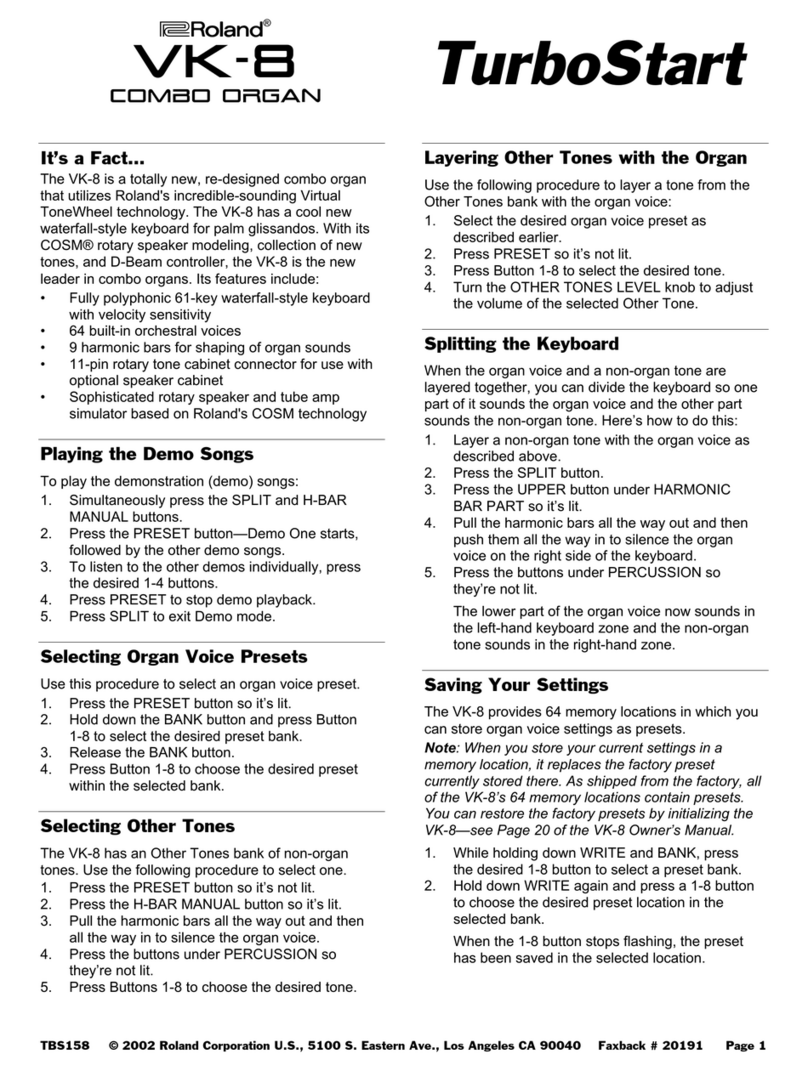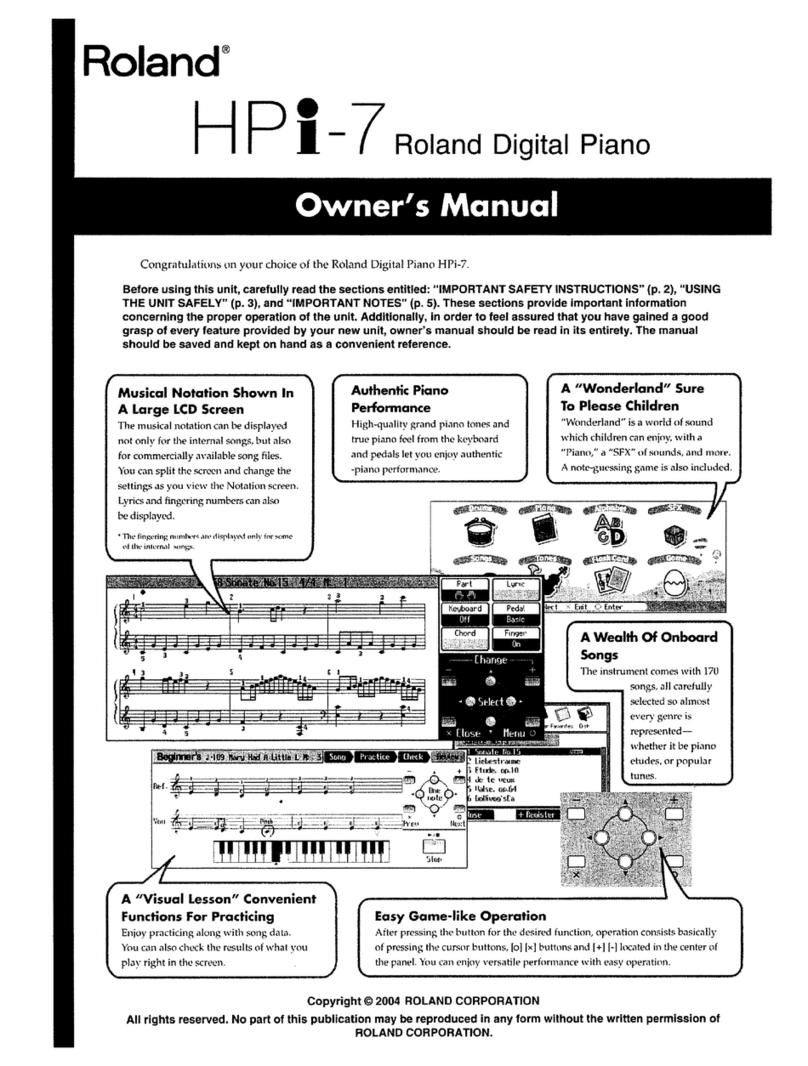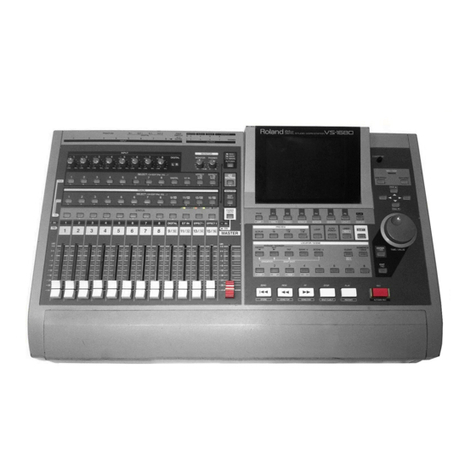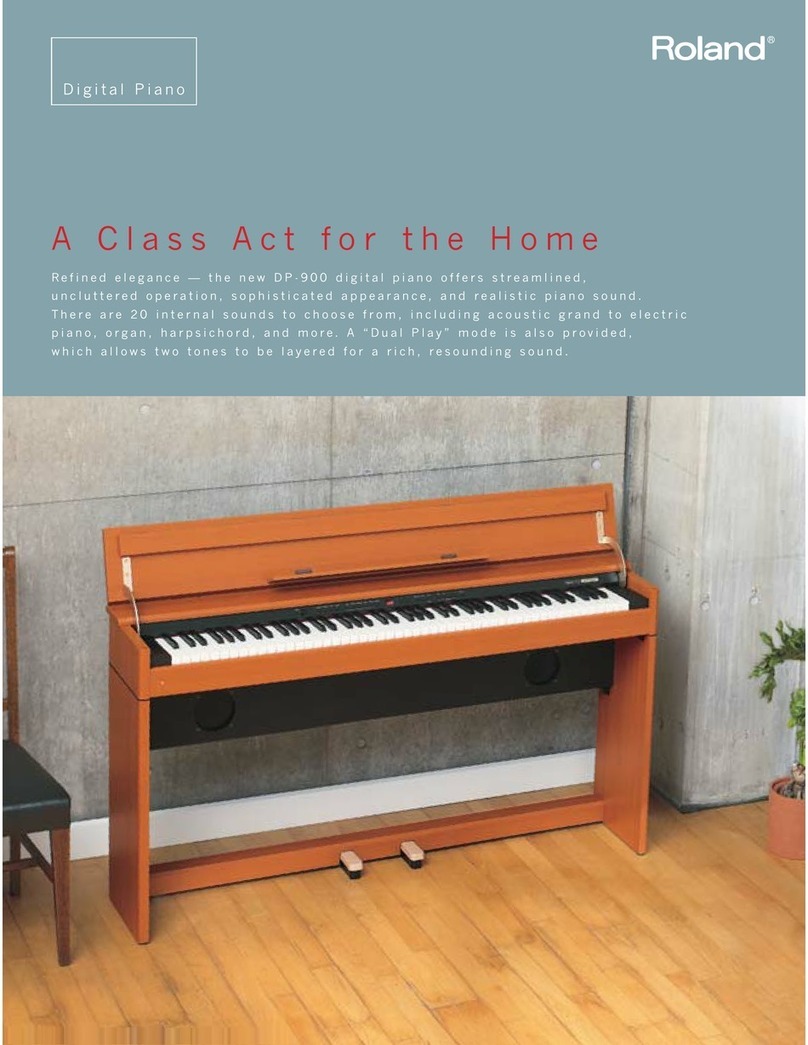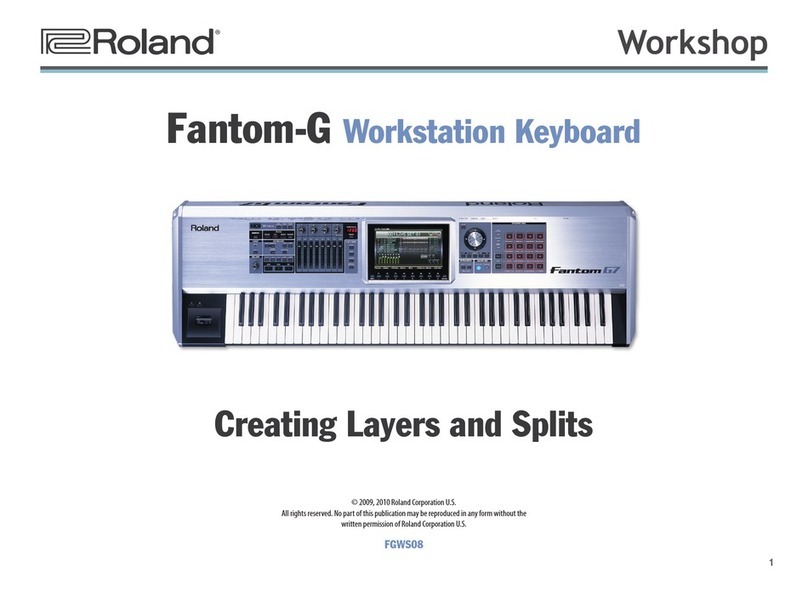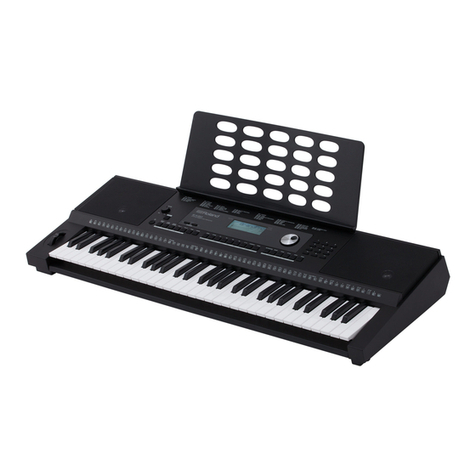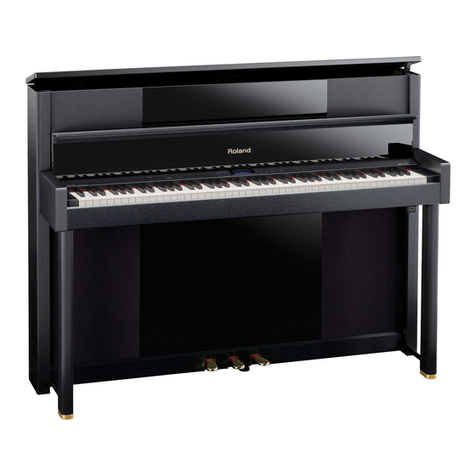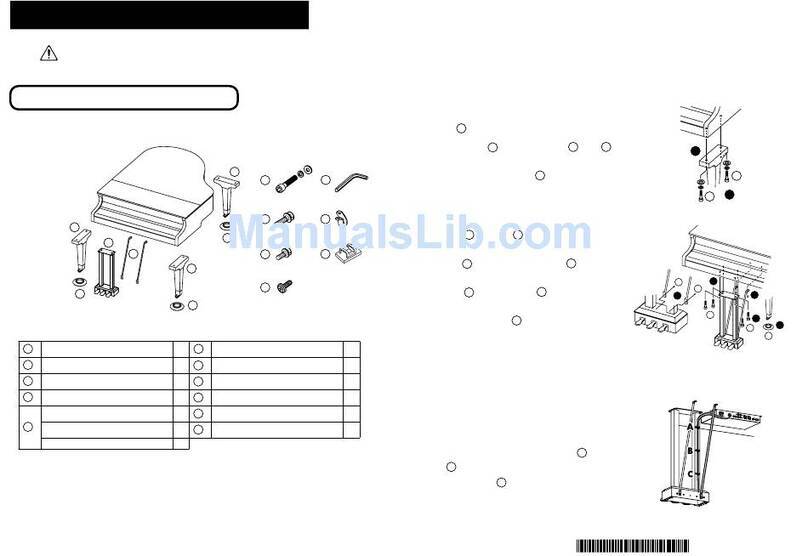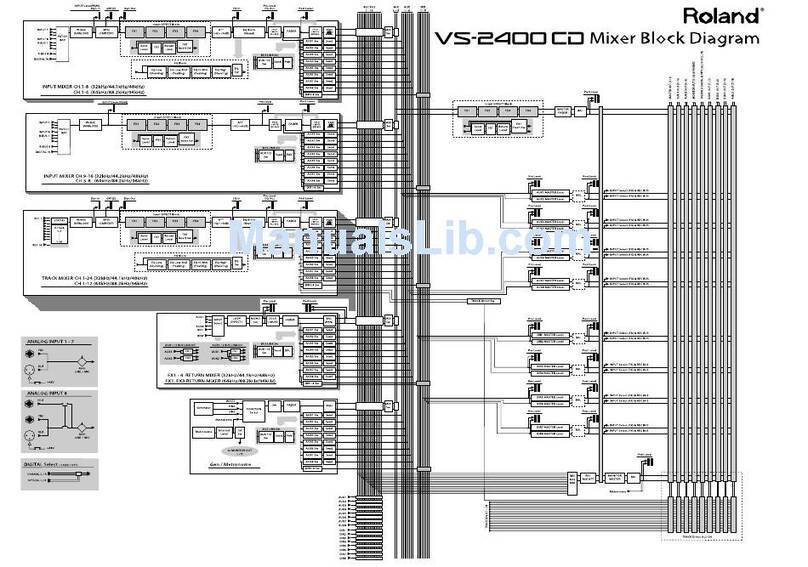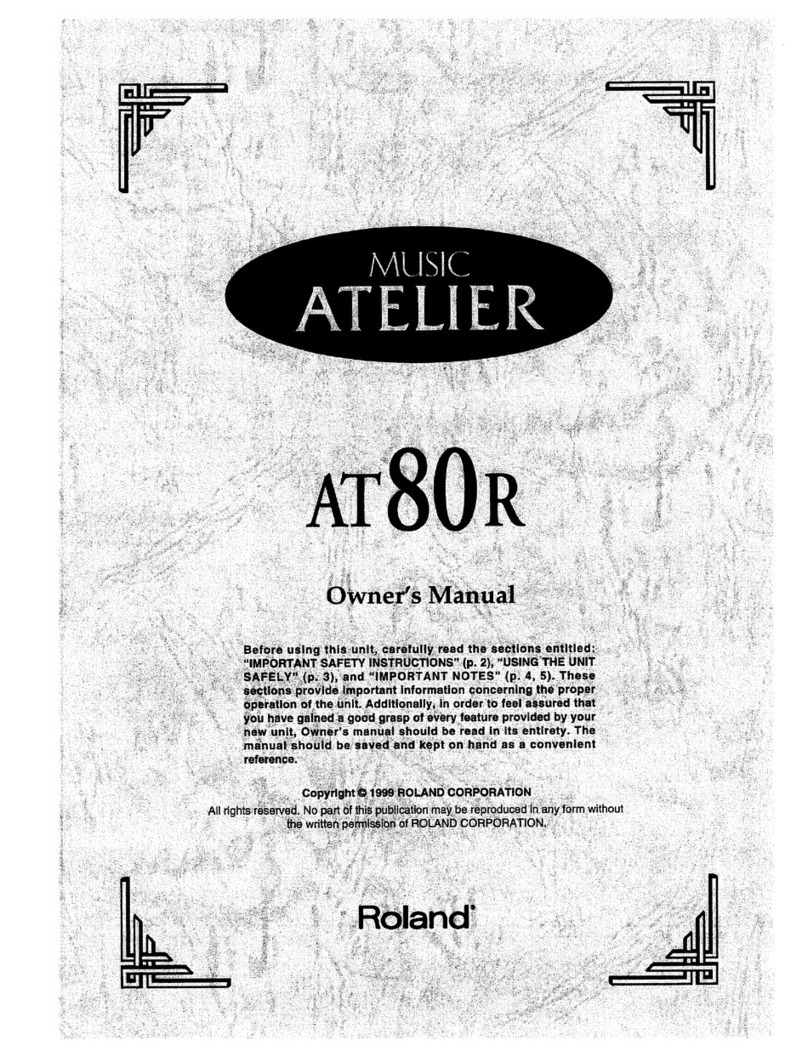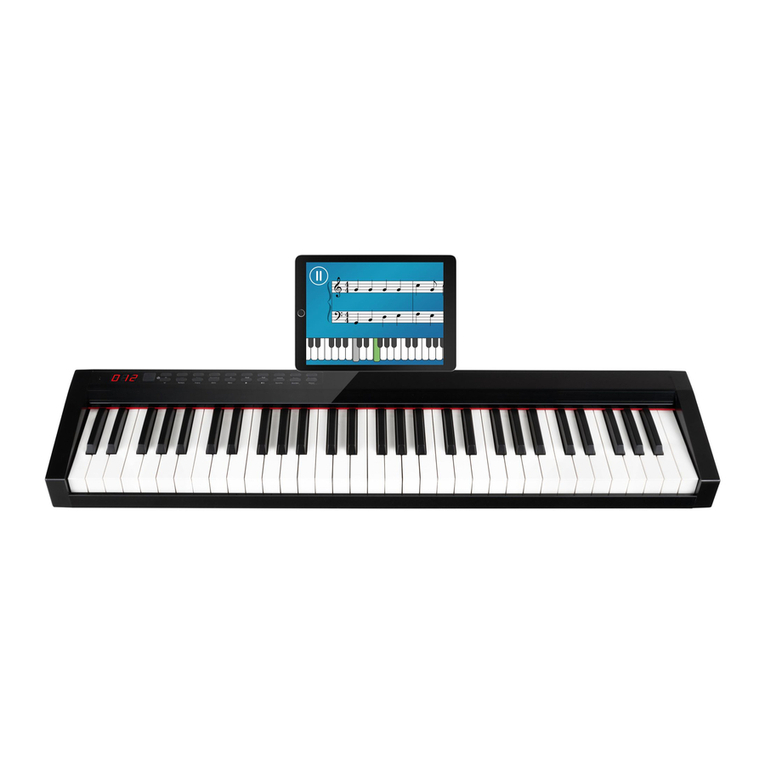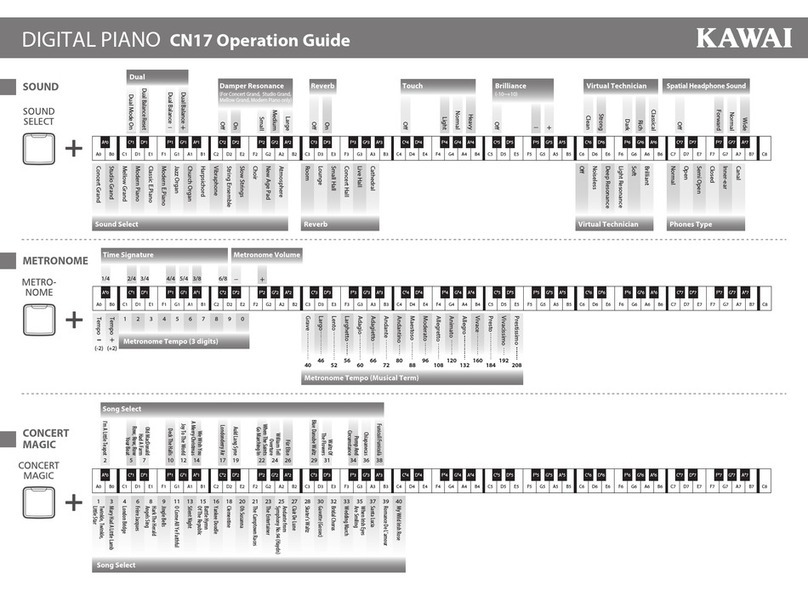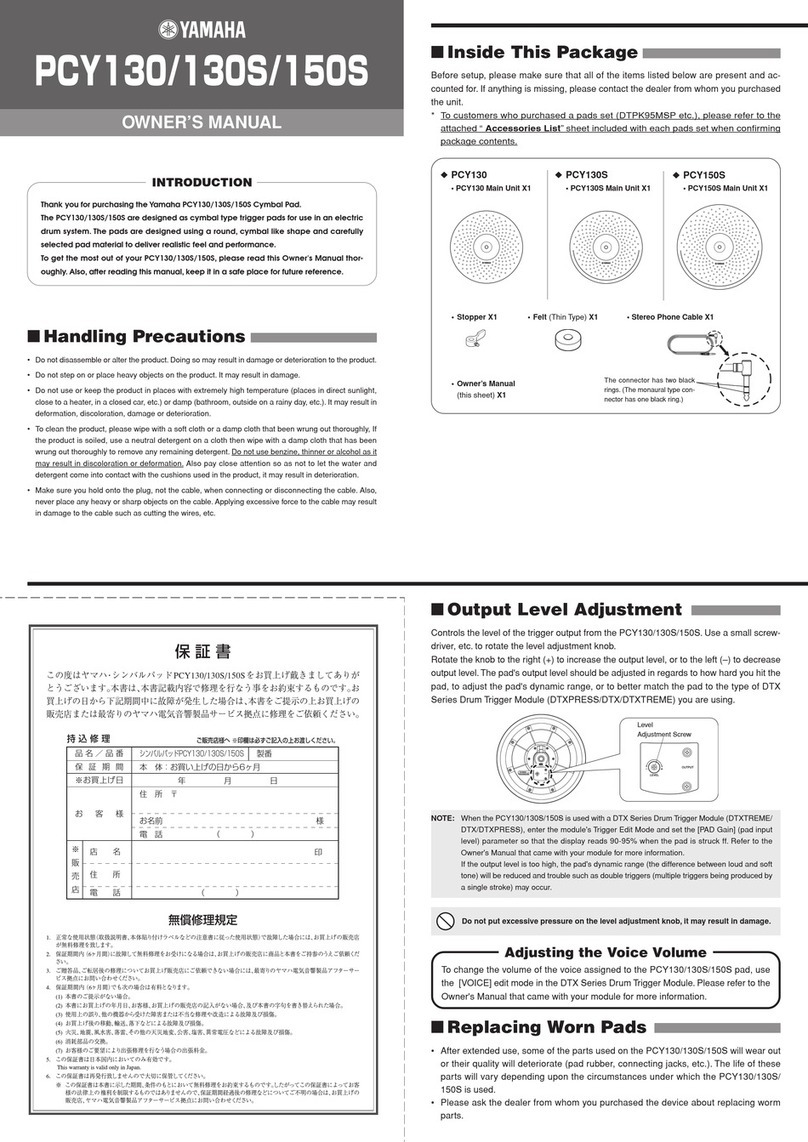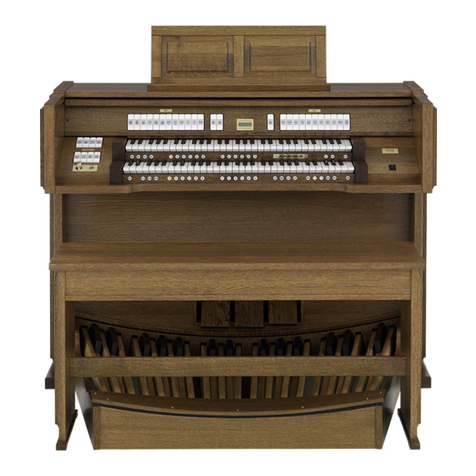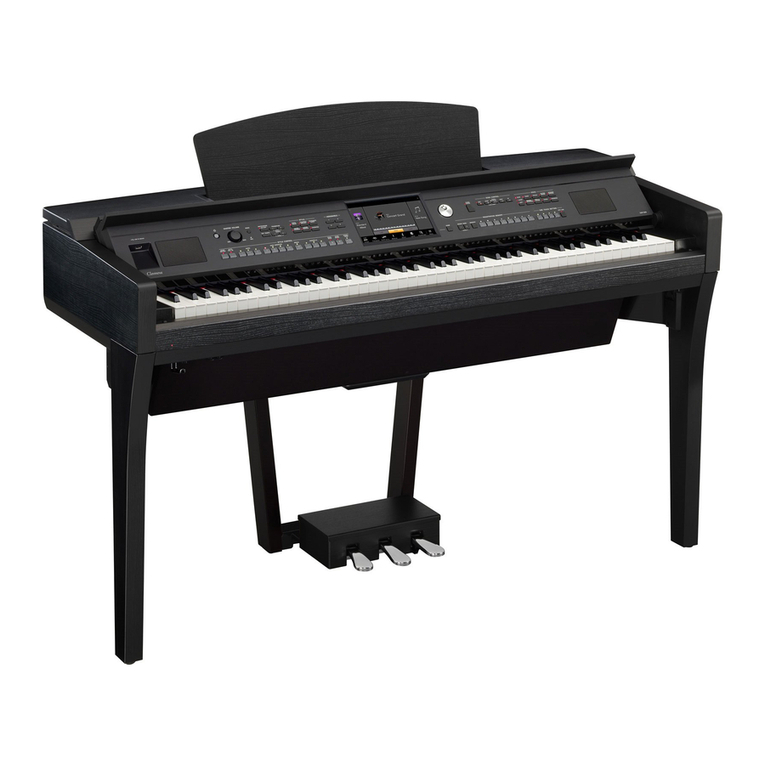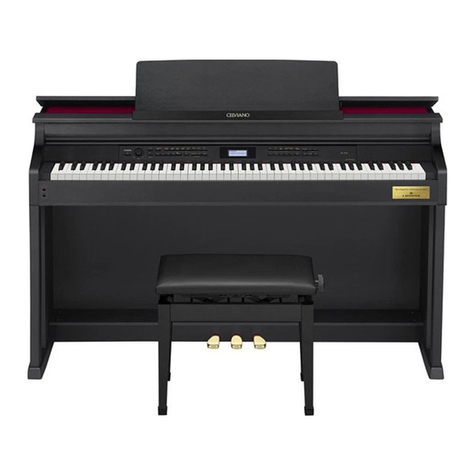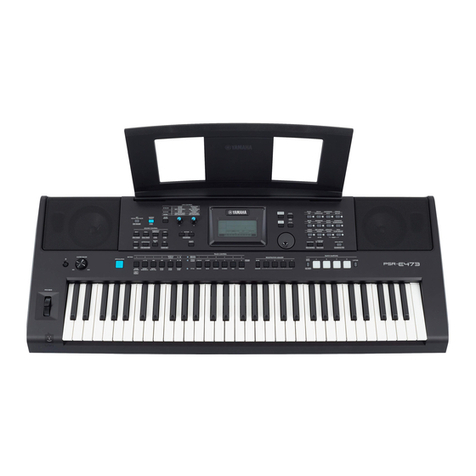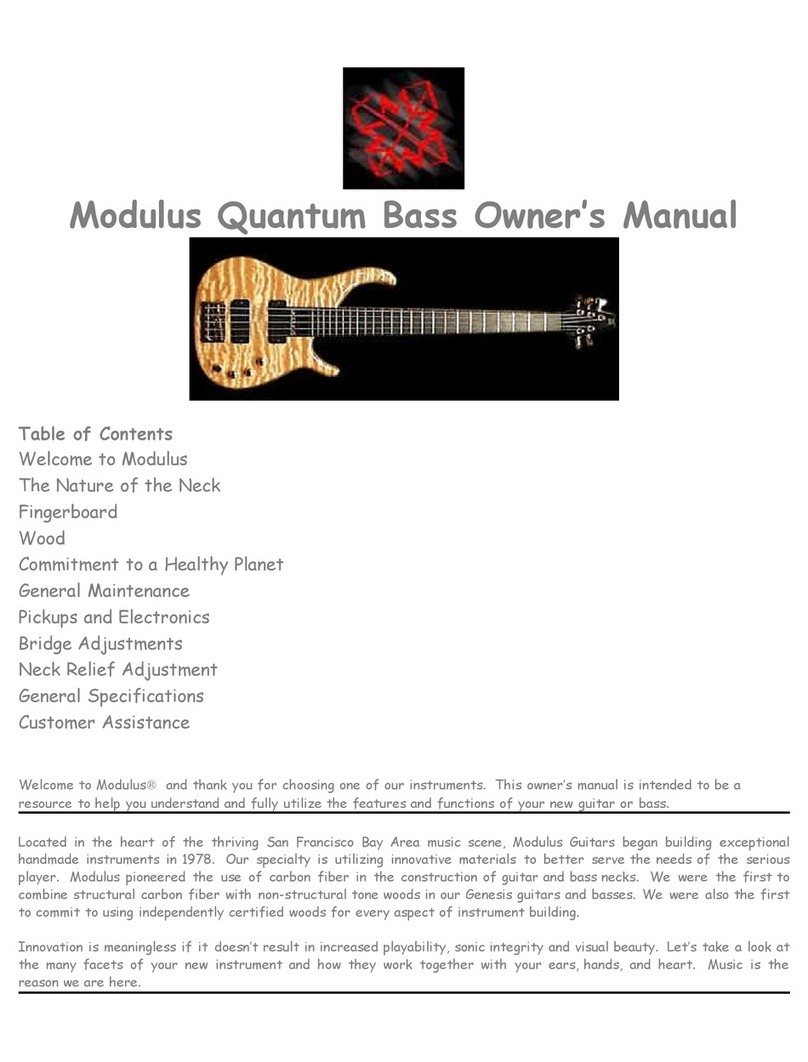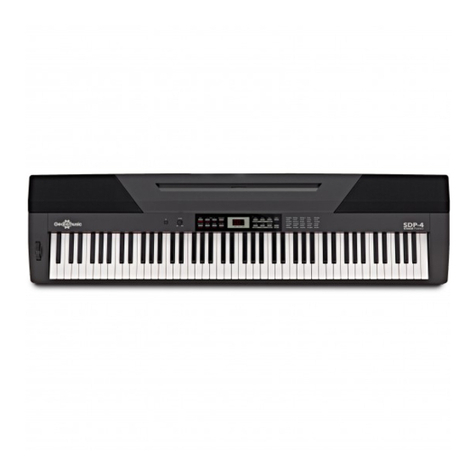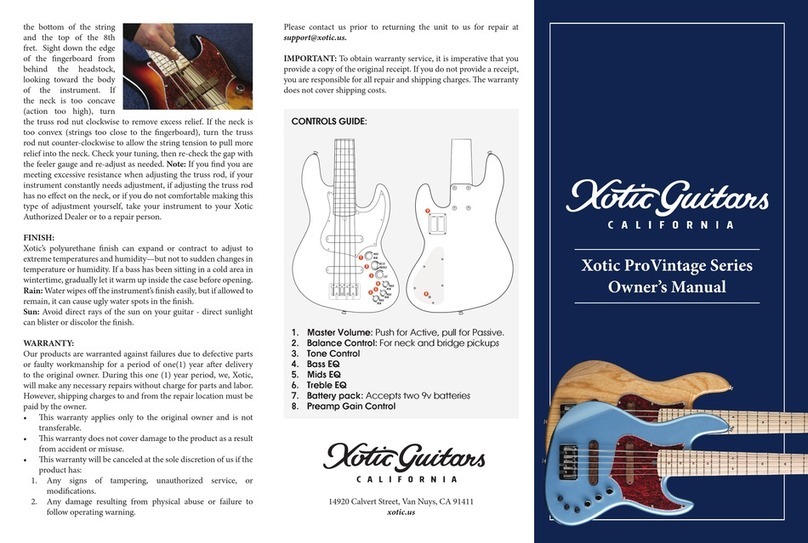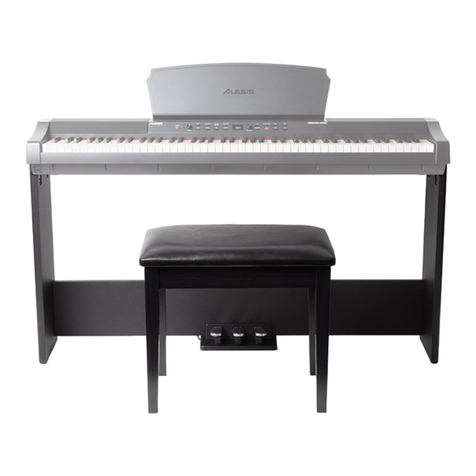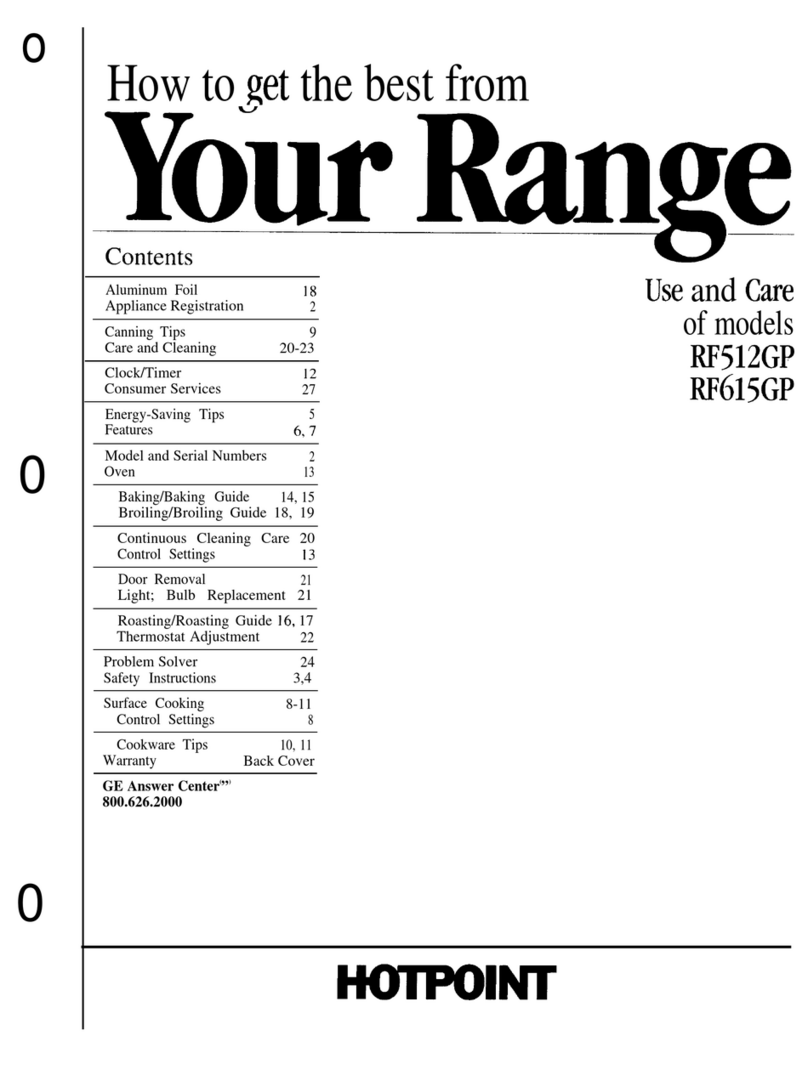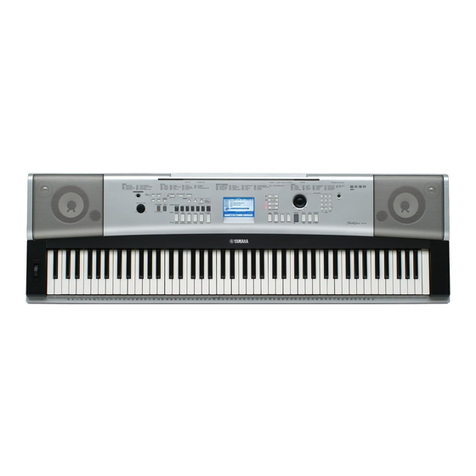
3
MIDI Implementation
❍
NRPN MSB/LSB (Controller number 98, 99)
Status 2nd bytes 3rd byte
BnH 63H mmH
BnH 62H llH
n = MIDI channel number:0H-FH (ch.1-ch.16)
mm = upper byte (MSB) of the parameter number specified by NRPN
ll = lower byte (LSB) of the parameter number specified by NRPN
* Rx.NRPN is set to OFF by power-on reset or by receiving “GM1 System On” or “GM2 System
On,” and NRPN message will be ignored. NRPN message will be received when Rx.NRPN = ON,
or by receiving “GS RESET.”
* The value set by NRPN will not be reset even if Program Change or Reset All Controllers is
received.
**NRPN**
The NRPN (Non Registered Parameter Number) message allows an extended range of control
changes to be used.
To use these messages, you must first use NRPN MSB and NRPN LSB messages to specify the
parameter to be controlled, and then use Data Entry messages to specify the value of the specified
parameter. Once an NRPN parameter has been specified, all Data Entry messages received on that
channel will modify the value of that parameter. To prevent accidents, it is recommended that you
set RPN Null (RPN Number = 7FH/7FH) when you have finished setting the value of the desired
parameter. Refer to Section 4. Supplementary material “Examples of actual MIDI messages”
<Example 4> (p. 14). On the GS devices, Data entry LSB (llH) of NRPN is ignored, so it is no problem
to send Data entry MSB (mmH) only (without Data entry LSB).
On this instrument, NRPN can be used to modify the following parameters.
NRPN Data entry
MSB LSB MSB Description
01H 08H mmH Vibrato Rate (relative change)
mm: 0EH-40H-72H (-50 - 0 - +50)
01H 09H mmH Vibrato Depth (relative change)
mm: 0EH-40H-72H (-50 - 0 - +50)
01H 0AH mmH Vibrato Delay (relative change)
mm: 0EH-40H-72H (-50 - 0 - +50)
01H 20H mmH TVF Cutoff Frequency (relative change)
mm: 0EH-40H-72H (-50 - 0 - +50)
01H 21H mmH TVF Resonance (relative change)
mm: 0EH-40H-72H (-50 - 0 - +50)
01H 63H mmH TVF&TVA Envelope Attack Time (relative change)
mm: 0EH-40H-72H (-50 - 0 - +50)
01H 64H mmH TVF&TVA Envelope Decay Time (relative change)
mm: 0EH-40H-72H (-50 - 0 - +50)
01H 66H mmH TVF&TVA Envelope Release Time (relative change)
mm: 0EH-40H-72H (i-50 - 0 - +50)
18H rrH mmH Drum Instrument Pitch Coarse (relative change)
r: key number of drum instrument
mm: 00H-40H-7FH (-63 - 0 - +63 semitone)
1AH rrH mmH Drum Instrument TVA Level (absolute change)
rr: key number of drum instrument
mm: 00H-7FH (zero-maximum)
1CH rrH mmH Drum Instrument Panpot (absolute change)
rr: key number of drum instrument
mm: 00H, 01H-40H-7FH (Random, Left-Center-Right)
1DH rrH mmH Drum Instrument Reverb Send Level (absolute change)
rr: key number of drum instrument
mm: 01H-7FH (zero-maximum)
1EH rrH mmH Drum Instrument Chorus Send Level (absolute change)
rr: key number of drum instrument
mm: 01H-7FH (zero-maximum)
* Parameters marked “relative change” will change relatively to the preset value(40H). Even
among different GS devices, “relative change” parameters may sometimes differ in the way the
sound changes or in the range of change.
* Parameters marked “absolute change” will be set to the absolute value of the parameter,
regardless of the preset value.
* Data entry LSB (llH) is ignored.
❍
RPN MSB/LSB (Controller number 100, 101)
Status 2nd bytes 3rd byte
BnH 65H mmH
BnH 64H llH
n = MIDI channel number: 0H-FH (ch.1-ch.16)
mm = upper byte (MSB) of parameter number specified by RPN
ll = lower byte (LSB) of parameter number specified by RPN
* Not received when Rx.RPN = OFF. (Initial value is ON)
* The value specified by RPN will not be reset even by messages such as Program Change or
Reset All Controller.
**RPN**
The RPN (Registered Parameter Number) messages are expanded control changes, and each
function of an RPN is described by the MIDI Standard.
To use these messages, you must first use RPN MSB and RPN LSB messages to specify the
parameter to be controlled, and then use Data Entry messages to specify the value of the specified
parameter. Once an RPN parameter has been specified, all Data Entry messages received on that
channel will modify the value of that parameter. To prevent accidents, it is recommended that you
set RPN Null (RPN Number = 7FH/7FH) when you have finished setting the value of the desired
parameter.Refer to Section 4. “Examples of actual MIDI messages” <Example 4> (p. 14).
On this instrument, RPN can be used to modify the following parameters.
RPN Data entry
MSB LSB MSB LSB Explanation
00H 00H mmH --- Pitch Bend Sensitivity
mm: 00H-18H (0-24 semitones),
Initial Value = 02H (2 semitones)
ll: ignored (processed as 00h)
specify up to 2 octaves in semitone steps
00H 01H mmH llH Master Fine Tuning
mm, ll: 00 00H - 40 00H - 7F 7FH (-100 - 0 - +99.99
cents), Initial Value = 40 00H (0 cent)
ll: ignored (processed as 00h)
specify up to 2 octaves in semitone steps
Refer to 4. Supplementary material, “About tuning”
(p. 15)
00H 02H mmH --- Master Coarse Tuning
mm: 28H - 40H - 58H (-24 - 0 - +24 semitones), Initial
Value = 40H (0 cent)
ll: ignored (processed as 00h)
00H 05H mmH llH Modulation Depth Range
mm: 00H - 04H (0 - 4 semitones)
ll: 00H - 7FH (0 - 100 cents)100/128 Cent/Value
7FH 7FH --- --- RPN null
Set condition where RPN and NRPN are unspecified.
The data entry messages after set RPN null will be
ignored. (No Data entry messages are required after
RPN null).
Settings already made will not change.
mm, ll: ignored
●
Program Change
Status 2nd bytes
CnH ppH
n = MIDI channel number: 0H-FH (ch.1-ch.16)
pp = Program number: 00H-7FH (prog.1-prog.128)
* Not received when Rx.PROGRAM CHANGE = OFF. (Initial value is ON)
* After a Program Change message is received, the sound will change beginning with the next
Note-on. Voices already sounding when the Program Change message was received will not
be affected.
* For Drum Parts, Program Change messages will not be received on bank numbers 129-16384
(the value of Control Number 0 is other than 0 (00H)).
●
Channel Pressure
Status 2nd bytes
DnH vvH
n = MIDI channel number: 0H-FH (ch.1-ch.16)
vv = Channel Pressure : 00H-7FH (0-127)
* Not received when Rx.CH PRESSURE (CAf) = OFF. (Initial value is ON)
* The resulting effect is determined by System Exclusive messages. With the initial settings there
will be no effect.


